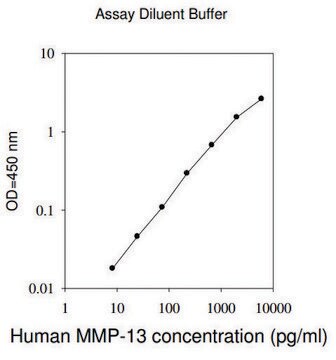SCCAR10148
Assay Ready MB49 Mouse Bladder Carcinoma Cell Line
Synonym(s):
MB-49, mouse bladder carcinoma, murine bladder carcinoma
Sign Into View Organizational & Contract Pricing
All Photos(3)
About This Item
UNSPSC Code:
41106514
NACRES:
NA.81
Recommended Products
biological source
human
Quality Level
packaging
vial of 1 vial
manufacturer/tradename
Millipore
technique(s)
cell culture | stem cell: suitable
shipped in
liquid nitrogen
storage temp.
−196°C
General description
MB49 cells are derived from C57BL/Icrf-a′ mouse bladder epithelial cells that were transformed by a single 24-hour treatment with the chemical carcinogen 7, 12-dimethylbenz[a]anthracene (DMBA) on the second day of a long term primary culture (1). Transformed cells transplanted into syngeneic mice were shown to generate carcinomas (1). While of male origin, karyotype analyses indicate the loss of the Y chromosome in 100% of the cells analyzed (2). This abnormality is a frequent early event in human bladder cancer.
A recent study indicates that MB49 cells recapitulate key features of sex differences in bladder tumor growth (3). MB49 implantation in mice resulted in significantly larger tumors in males than females. In the presence of dihydrotestosterone, MB49 cells exhibited enhanced proliferation in a dose-dependent manner. In contrast, MB49 cells were unresponsive to the pregnancy hormone, human chorionic gonadotrophin (hCG) (3).
MB49 cells exhibit low to no expression of MHC-Class I and II molecules (4). However, upon exposure to IFN-?, the expressions of MHC Class I and II are significantly upregulated (4).
References:
1. Summerhayes IC, Franks LM (1979) Effects of donor age on neoplastic transformation of adult mouse bladder epithelium in vitro. J Natl Cancer Inst 62(4): 1017 - 1023.
2. Fabris VT, Lodilinsky C, Pampena MB, Belgorosky D, Lanari C, Eiján AM (2012) Cytogenetic characterization of the murine bladder cancer model MB49 and the derived invasive line MB49-I. Cancer Genet 205(4): 168 - 76.
3. White-Gilbertson S, Davis M, Voelkel-Johnson C, Kasman LM (2016) Sex differences in the MB49 syngeneic, murine model of bladder cancer. Bladder (San Franc) 3(1): PMID: 26998503.
4. Lattime EC, Gomelia LG, McCue PA (1992) Murine bladder carcinoma cells present antigen to BCG-specific CD4+ T-cells. Cancer Res 52(15): 4286 - 90.
A recent study indicates that MB49 cells recapitulate key features of sex differences in bladder tumor growth (3). MB49 implantation in mice resulted in significantly larger tumors in males than females. In the presence of dihydrotestosterone, MB49 cells exhibited enhanced proliferation in a dose-dependent manner. In contrast, MB49 cells were unresponsive to the pregnancy hormone, human chorionic gonadotrophin (hCG) (3).
MB49 cells exhibit low to no expression of MHC-Class I and II molecules (4). However, upon exposure to IFN-?, the expressions of MHC Class I and II are significantly upregulated (4).
References:
1. Summerhayes IC, Franks LM (1979) Effects of donor age on neoplastic transformation of adult mouse bladder epithelium in vitro. J Natl Cancer Inst 62(4): 1017 - 1023.
2. Fabris VT, Lodilinsky C, Pampena MB, Belgorosky D, Lanari C, Eiján AM (2012) Cytogenetic characterization of the murine bladder cancer model MB49 and the derived invasive line MB49-I. Cancer Genet 205(4): 168 - 76.
3. White-Gilbertson S, Davis M, Voelkel-Johnson C, Kasman LM (2016) Sex differences in the MB49 syngeneic, murine model of bladder cancer. Bladder (San Franc) 3(1): PMID: 26998503.
4. Lattime EC, Gomelia LG, McCue PA (1992) Murine bladder carcinoma cells present antigen to BCG-specific CD4+ T-cells. Cancer Res 52(15): 4286 - 90.
Features and Benefits
MB49 implantation in mice resulted in significantly larger tumors in males than females. In the presence of dihydrotestosterone, MB49 cells exhibited enhanced proliferation in a dose-dependent manner. In contrast, MB49 cells were unresponsive to the pregnancy hormone human chorionic gonadotrophin (hCG) [3]. MB49 cells exhibit low to no expression of MHC-Class I and II molecules [4]. However, upon exposure to IFN-?, the expressions of MHC Class I and II are significantly upregulated
Target description
MB49 cells are derived from C57BL/Icrf-a mouse bladder epithelial cells that were transformed by a single 24-hour treatment with the chemical carcinogen 7, 12-dimethylbenz[a]anthracene (DMBA) on the second day of a long term primary culture [1]. Transformed cells transplanted into syngeneic mice were shown to generate carcinomas [1]. While of male origin, karyotype analyses indicate the loss of the Y chromosome in 100% of the cells analyzed [2]. This abnormality is a frequent early event in human bladder cancer. A recent study indicates that MB49 cells recapitulate key features of sex differences in bladder tumor growth.
Storage and Stability
MB49 cells should be stored in liquid nitrogen.
Other Notes
This product is intended for sale as a consumable. It may not be propagated, passaged, or expanded and is subject to the terms of the “Assay Ready Cells Research Use Agreement” as detailed in the product documentation. For information regarding any other use, please contact licensing@milliporesigma.com.
Disclaimer
Unless otherwise stated in our catalog or other company documentation accompanying the product(s), our products are intended for research use only and are not to be used for any other purpose, which includes but is not limited to, unauthorized commercial uses, in vitro diagnostic uses, ex vivo or in vivo therapeutic uses or any type of consumption or application to humans or animals.
Storage Class Code
12 - Non Combustible Liquids
WGK
WGK 2
Flash Point(F)
Not applicable
Flash Point(C)
Not applicable
Certificates of Analysis (COA)
Search for Certificates of Analysis (COA) by entering the products Lot/Batch Number. Lot and Batch Numbers can be found on a product’s label following the words ‘Lot’ or ‘Batch’.
Already Own This Product?
Find documentation for the products that you have recently purchased in the Document Library.
Our team of scientists has experience in all areas of research including Life Science, Material Science, Chemical Synthesis, Chromatography, Analytical and many others.
Contact Technical Service







